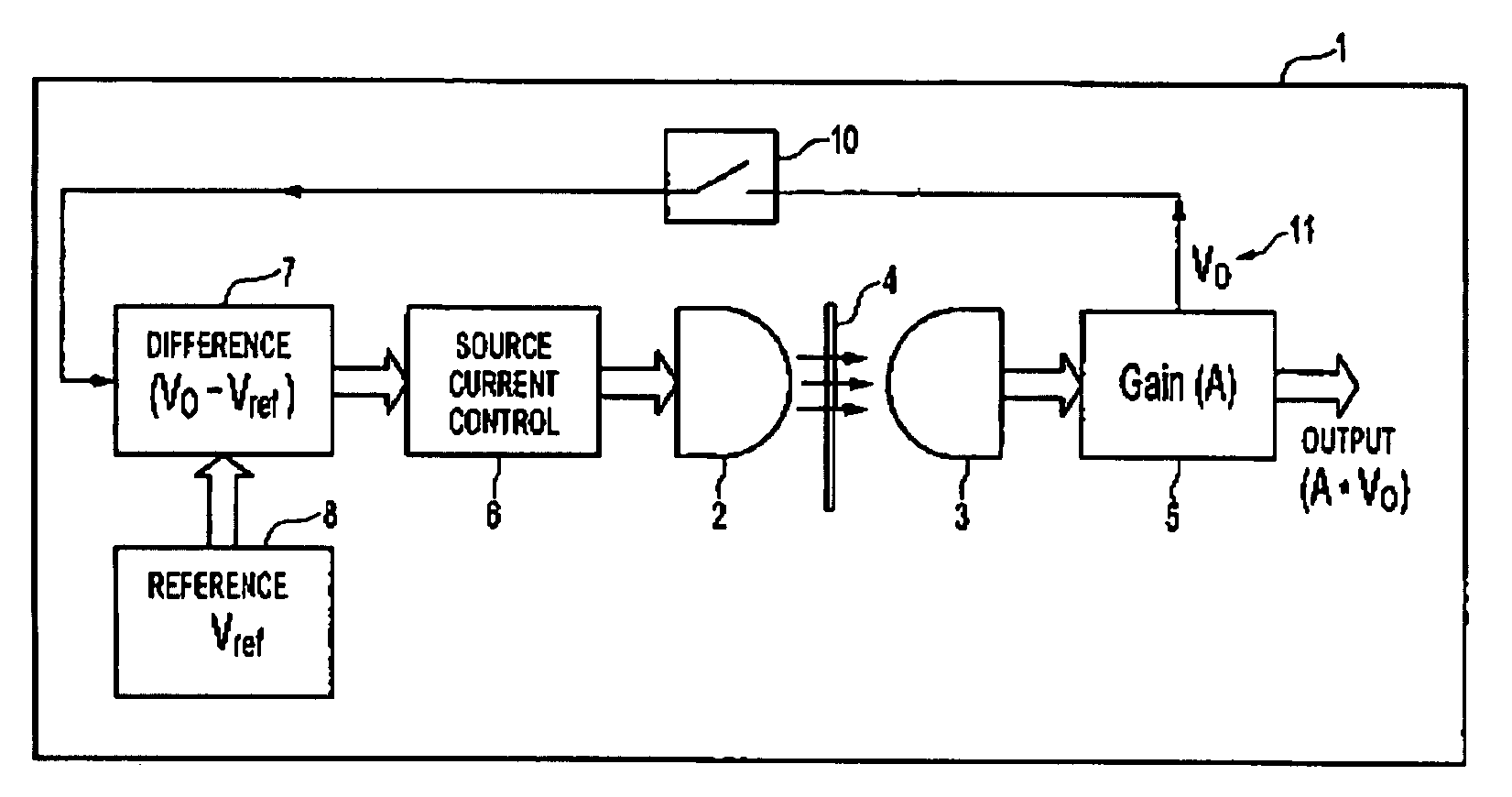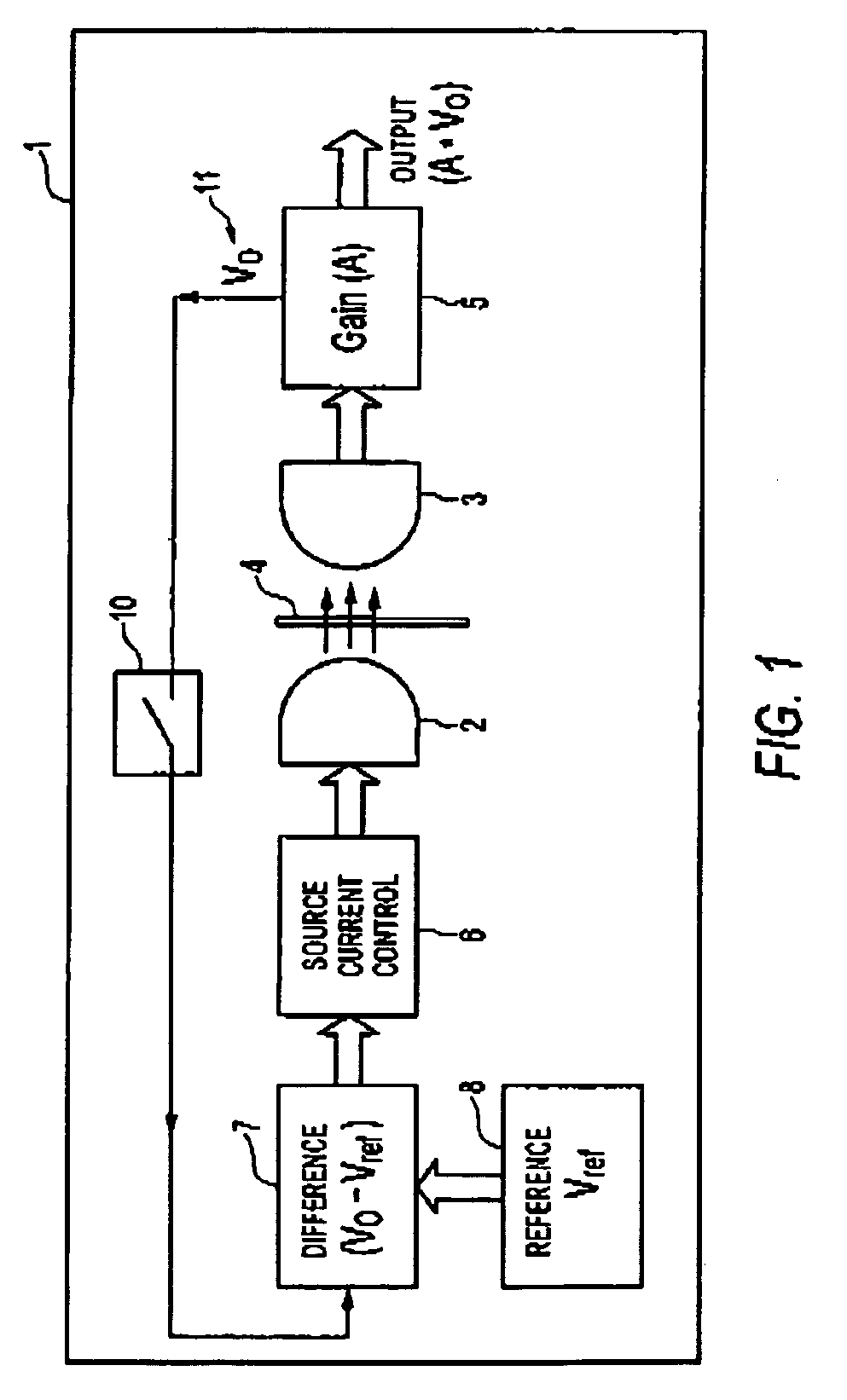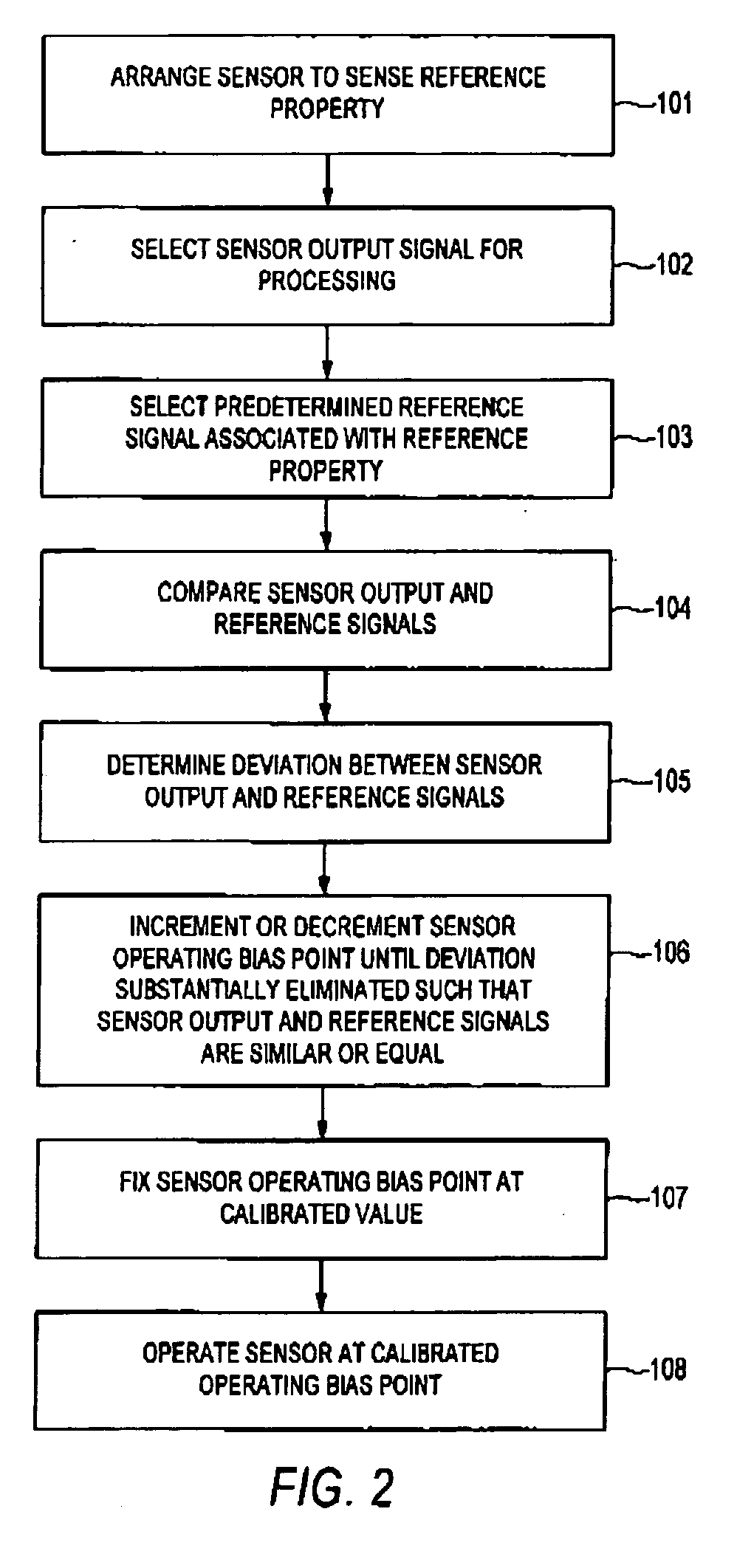Self-calibrating sensor
a self-calibrating, sensor technology, applied in the direction of speed/acceleration/shock measurement, liquid/fluent solid measurement, instruments, etc., can solve the problems of increasing sensor manufacturing costs and time, and the technique is both costly and complicated to implement in each individual sensor
- Summary
- Abstract
- Description
- Claims
- Application Information
AI Technical Summary
Benefits of technology
Problems solved by technology
Method used
Image
Examples
Embodiment Construction
[0031] Referring to FIG. 1 of the accompanying drawings, which illustrates a block diagram of a self-calibrating sensor according to a preferred embodiment, the principle elements of the self-calibrating sensor 1 include a sensor transducer 2, 3, an amplifier 5, coupled to the output of the sensor transducer 3, and a self-calibrating circuit 6, 7, 10 coupled thereto for providing self-calibration of the sensor. An IR source 2, such as an IR LED and an associated photodetector 3, such as a phototransistor, form the sensor transducer. The self calibrating system has a differential circuitry 7, a biasing controller / source 6, coupled to the output of the differential circuitry 7 and the input of the sensor transducer 2, and a calibration switch 10 interposing an output of the sensor transducer and the input of the differential circuitry 7.
[0032] The illustrative embodiment depicted in FIG. 1 provides a general approach to providing a self-calibration sensor which can perform self-calib...
PUM
 Login to View More
Login to View More Abstract
Description
Claims
Application Information
 Login to View More
Login to View More - R&D
- Intellectual Property
- Life Sciences
- Materials
- Tech Scout
- Unparalleled Data Quality
- Higher Quality Content
- 60% Fewer Hallucinations
Browse by: Latest US Patents, China's latest patents, Technical Efficacy Thesaurus, Application Domain, Technology Topic, Popular Technical Reports.
© 2025 PatSnap. All rights reserved.Legal|Privacy policy|Modern Slavery Act Transparency Statement|Sitemap|About US| Contact US: help@patsnap.com



